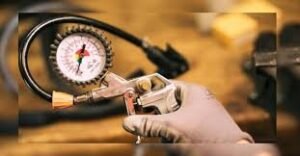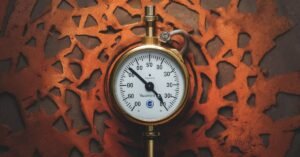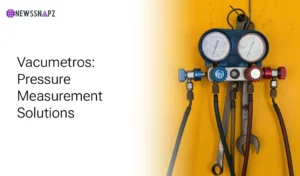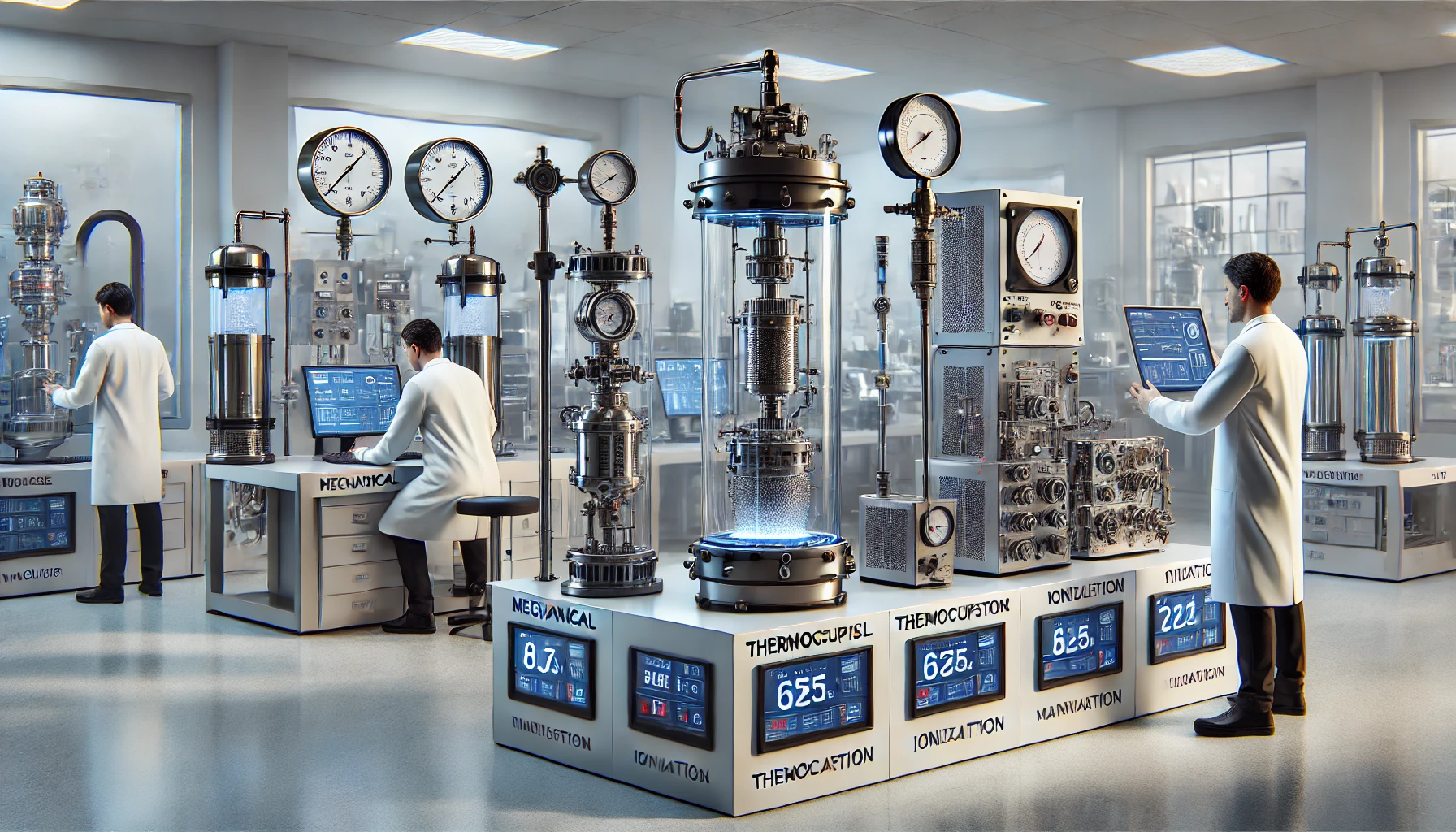the best Vacumetros: What They Are and Why They Matter
Vacumetros are special tools used to measure how much space is empty of air. You might also hear them called vacuum gauges. These devices help us check and control vacuum levels in different machines and industries.
Understanding how vacumetros work is important because they ensure that everything runs smoothly. From making tiny computer chips to helping doctors with medical machines, vacumetros play a big role in keeping things working just right.
What Are Vacumetros?
Vacumetros are special tools that measure how much air is missing from a space. They help us see how strong a vacuum is in different machines and systems. Think of them like a ruler for empty spaces.
In simple terms, they check if there’s just the right amount of air or if it’s too much. This is important because many machines need a specific amount of air to work properly. Without a vacuometer, it would be hard to know if the vacuum is correct.
Machines like those in factories or even space equipment use vacumetros to make sure everything works smoothly. They help keep the air pressure just right so that products are made perfectly.
How Vacumetros Work in Simple Terms
Understanding how vacumetros work can be quite interesting. These tools measure air pressure inside a vacuum. When we talk about vacumetros, we mean they check how much air is pulled out of a space.
Vacumetros often have different parts to help measure the vacuum level. Some use a needle to show the pressure, while others use digital screens to give a clear readout. This helps people know exactly how much air is left or missing.
When the vacuum level is just right, it means the machine or process is working as it should. If the level is off, adjustments can be made. This ensures that everything runs smoothly and safely, whether it’s in a factory or a lab.
Different Types of Vacumetros Explained
There are several types of vacumetros, each with a unique way of measuring vacuum levels. One common type is the analog vacuometer, which uses a needle and dial. This is a classic design that shows vacuum levels in a straightforward way.
Digital vacumetros are a bit more modern. They use electronic screens to display the readings. Many of these also come with extra features like data logging, which records measurements over time.
Other types include ionization gauges and Pirani gauges. Ionization gauges are used for very high vacuums, while Pirani gauges are great for medium vacuums. Each type is suited for different jobs, making vacumetros versatile tools.
Why You Need Vacumetros in Manufacturing
In manufacturing, vacumetros are crucial. They help ensure that products are made with the right amount of air pressure. For example, in making tiny electronic parts, a precise vacuum is needed to avoid defects.
Without a vacuometer, it would be challenging to maintain the right vacuum levels. This could lead to problems in product quality or machine performance. Using vacumetros helps avoid such issues, making sure that everything runs smoothly.
Machines in factories rely on vacumetros to function correctly. By keeping track of vacuum levels, these tools help in creating high-quality products efficiently. This makes vacumetros essential for any manufacturing process.
How Vacumetros Help in Healthcare
In the healthcare industry, vacumetros play an important role. They are used in medical machines like MRI machines and vacuum-assisted wound closure systems. These devices need accurate vacuum levels to work properly.
For MRI machines, a precise vacuum ensures that the imaging is clear and accurate. In wound care, the right vacuum levels help in healing and keeping wounds clean. Vacumetros help maintain these conditions, making medical procedures safer and more effective.
Doctors and medical staff rely on vacumetros to ensure that equipment functions correctly. This helps in providing the best care to patients and in performing medical procedures smoothly.
Using Vacumetros for Space Exploration
Space exploration also benefits from vacumetros. In space missions, creating and maintaining vacuums is essential for various experiments and equipment. Vacumetros help measure and control these vacuums precisely.
In space, there’s no air, so vacumetros are used to create and manage vacuums in equipment and experiments. This ensures that everything operates as it should, even in the challenging conditions of space.
By using vacumetros, scientists can conduct experiments and operate equipment effectively in space. This helps in advancing our understanding of space and in carrying out successful space missions.
Easy Guide to Using a Vacuometer
Using a vacuometer is fairly simple once you understand the basics. First, you need to connect the vacuometer to the system you want to measure. Make sure it is securely attached to get accurate readings.
Next, turn on the vacuometer and observe the display. Whether it’s an analog or digital model, it will show you the current vacuum level. Compare this level to the desired vacuum to ensure it’s correct.
Regular checks and calibration are important. This keeps the vacuometer working properly and ensures that your measurements are accurate. Following these steps helps in using a vacuometer effectively.
Maintaining Your Vacuometer: Tips and Tricks
Proper maintenance of a vacuometer is key to keeping it in good working condition. Regular cleaning is essential to remove any dust or debris. This helps in getting accurate readings.
You should also calibrate your vacuometer according to the manufacturer’s instructions. Calibration ensures that the measurements are correct and reliable. It’s a good practice to check the calibration often.
Additionally, check for any worn-out parts and replace them as needed. Routine maintenance helps in extending the life of your vacuometer and ensures that it continues to function properly.
How to Calibrate Vacumetros for Best Results
Calibrating your vacuometer is crucial for getting the best results. Start by following the manufacturer’s instructions carefully. They will provide specific steps for calibration.
You usually need a reference standard or calibration kit to set the vacuometer correctly. Follow the kit’s guidelines to adjust the vacuometer’s readings to match the reference.
Regular calibration is important to maintain accuracy over time. By calibrating your vacuometer as recommended, you ensure that it provides reliable measurements for your needs.
Common Problems with Vacumetros and How to Fix Them
Sometimes, vacumetros can face problems like inaccurate readings or display issues. If you notice any inconsistencies, the first step is to check if the device needs calibration.
Another common issue is blockages in the vacuometer. Cleaning the device thoroughly can often resolve this problem. Make sure there are no obstructions affecting the measurement.
If problems persist, refer to the user manual or contact customer support. They can provide guidance on troubleshooting and fixing the vacuometer. Regular maintenance helps in preventing many common issues.
Comparing Analog vs. Digital Vacumetros
Analog vacumetros use a needle and dial to show vacuum levels. They are simple and easy to read but might not have the extra features of digital models. They are reliable for straightforward tasks.
Digital vacumetros, on the other hand, use electronic displays to provide readings. They often come with additional features like data logging and connectivity options. This makes them suitable for more complex measurements.
Both types have their advantages. Choosing between them depends on your needs and the complexity of the tasks. Digital vacumetros offer more features, while analog models are straightforward and durable.
What Makes Ionization Gauges Special?
Ionization gauges are a type of vacuometer used for very high vacuums. They work by measuring the ions created when gas molecules are ionized. This helps in detecting very low pressures accurately.
These gauges are essential in environments where extreme vacuum conditions are needed. They are commonly used in scientific research and space technology. Their ability to measure very low pressures makes them unique.
Ionization gauges are complex but very accurate. They play a critical role in achieving and monitoring high vacuum conditions in various applications.
The Science Behind Pirani Gauges
Pirani gauges are another type of vacuometer designed for medium vacuums. They work by measuring the thermal conductivity of gases. As the pressure changes, the thermal conductivity changes, which helps in determining the vacuum level.
These gauges are popular in industrial settings where medium vacuum levels are needed. They provide reliable measurements and are easier to use than some other types of vacuometers.
Understanding how Pirani gauges work helps in using them effectively. Their design allows for accurate measurement of vacuum levels in a variety of applications.
Why Capacitance Manometers Are Useful
Capacitance manometers are used to measure pressure by detecting changes in capacitance. They have two diaphragms, and as the pressure changes, the distance between them changes. This change in distance affects the capacitance, which is measured.
These gauges are useful for precise measurements in a range of applications. They provide accurate readings and are often used in scientific and industrial processes.
Capacitance manometers are known for their reliability and accuracy. They are valuable tools in any setting where precise pressure measurements are needed.
The Future of Vacumetros: What’s Next?
The future of vacumetros looks bright with advances in technology. New models are expected to have even more features and improved accuracy. Technology continues to evolve, making vacumetros more efficient.
Expect to see more digital vacumetros with advanced data logging and connectivity features. These upgrades will help in making measurements more precise and easier to manage.
The development of new materials and technologies will also enhance the performance of vacumetros. Keeping up with these advancements will be important for anyone using these tools in the future.
The Role of Vacuometers in Electronics Manufacturing
In electronics manufacturing, vacuometers are crucial for creating high-quality components. These devices ensure that vacuum levels are precisely controlled, which is essential for processes like thin-film deposition and semiconductor fabrication. When making tiny electronic parts, even a small mistake can lead to defects, so maintaining the right vacuum is key.
Manufacturers use vacuometers to monitor and adjust the vacuum conditions in their equipment. This helps in achieving the exact environment needed for each stage of production. For instance, in the production of semiconductors, a stable vacuum environment prevents contamination and ensures the proper layering of materials.
Moreover, vacuometers help in maintaining the efficiency of production lines. By ensuring that the vacuum conditions are consistent, these devices reduce the chances of equipment failure and improve the overall quality of the products. This makes vacuometers indispensable in the electronics industry, where precision is crucial.
Understanding the Different Measurements of Vacuometers
Vacuometers measure vacuum levels using various techniques, and understanding these can help in choosing the right tool for your needs. One common measurement is the gauge pressure, which tells us how much pressure is inside the vacuum system compared to the outside atmosphere. This is essential for many industrial processes where maintaining a specific pressure is critical.
Another important measurement is the absolute pressure. This measures the total pressure within the vacuum system, including any pressure from the vacuum itself and any residual gases. Absolute pressure measurements are often used in scientific research where precise conditions are necessary.
By understanding these measurements, you can better select and use vacuometers for different applications. Whether you’re dealing with high or low pressures, knowing how each measurement works helps in ensuring accurate and reliable results.
Troubleshooting Common Issues with Vacuometers
When using vacuometers, you might encounter some common issues that need troubleshooting. One frequent problem is inaccurate readings. This can occur due to several factors, such as incorrect calibration or buildup of dust and debris. Regular maintenance and calibration can help prevent these issues.
Another issue could be a malfunctioning display. If the display isn’t showing the correct information, check for loose connections or damaged components. Sometimes, simply cleaning the display or resetting the device can resolve the problem.
If the vacuometer is not working at all, it could be due to a power issue or a failure in the internal electronics. Ensure that the device is properly connected to a power source and check for any obvious signs of damage. For persistent issues, consulting the manufacturer’s support or manual is recommended for further assistance.
The Benefits of Digital Vacuometers Over Analog Models
Digital vacuometers offer several benefits compared to their analog counterparts. One major advantage is the precision of digital displays. Unlike analog gauges that use a needle and dial, digital vacuometers provide exact numerical readings, which can be easier to interpret and more accurate.
Digital models often come with additional features such as data logging and connectivity options. This means you can record and analyze measurements over time, which is useful for monitoring long-term trends or making adjustments based on data.
Another benefit is the ease of use. Digital vacuometers typically have user-friendly interfaces and can often be operated with just a few buttons. This simplifies the process of taking measurements and reduces the likelihood of errors. Overall, digital vacuometers offer enhanced functionality and accuracy, making them a popular choice for many applications.
How to Choose the Right Vacuometer for Your Needs
Choosing the right vacuometer depends on several factors, including the type of vacuum you need to measure and the specific requirements of your application. For high-vacuum environments, ionization gauges are often the best choice due to their ability to measure very low pressures accurately.
If you need a vacuometer for general industrial use, a Pirani gauge or a capacitance manometer might be more suitable. These types are effective for medium to high vacuum ranges and offer reliable performance in various settings.
Consider the features you need, such as digital displays or data logging capabilities. Digital vacuometers often come with additional functionalities that can be useful for more complex tasks. By evaluating your specific needs and comparing the features of different vacuometers, you can select the best tool for your application.
Conclusion
Vacuometers are super important tools that help us measure how much air is missing from a space. Whether you’re making electronics, working in healthcare, or exploring space, these devices make sure everything works just right. They come in different types and have many uses, making them a valuable part of many industries.
By understanding how to use and maintain vacuometers, you can ensure they always give accurate readings. Regular checks and proper care help keep them in top shape, so they can do their job effectively. So next time you see a vacuometer, remember how it helps in making and keeping things perfect!


